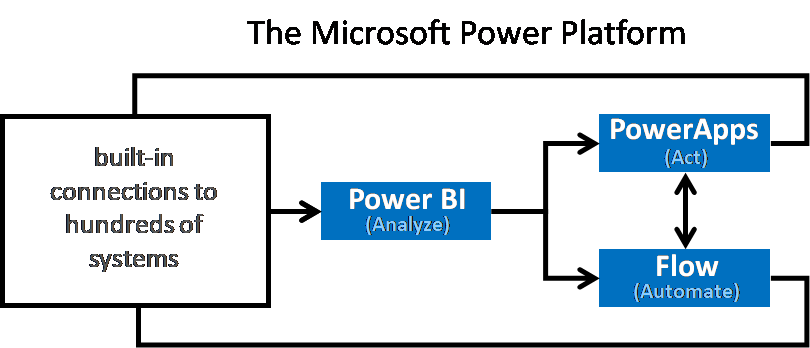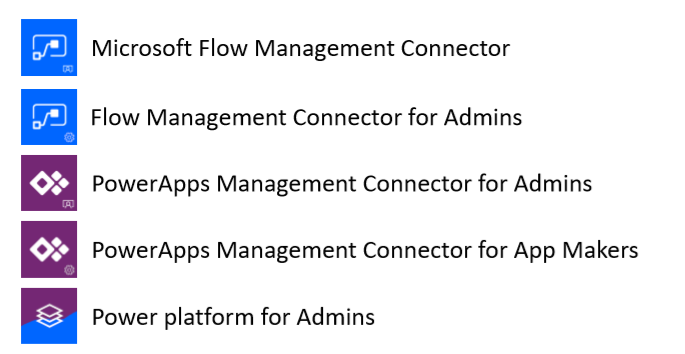How to Streamline Power Platform Onboarding for New Citizen Developers

Gain a better understanding of how users are interacting with your environment with our upcoming webinar “Using Power BI & DocAve to Visualize Workspace Usage & Permissions” on Tuesday, October 29th at 11:00 am EST.
We’ve all been there: New employees join an organization and immediately struggle with the new tools at their disposal. Typically, there’s some type of onboarding process they undergo to learn about the various systems they’ll be using for their work, including best practices and general do’s and don’ts.
When it comes to the Power Platform (Microsoft Flow, PowerApps, and Power BI), however, such onboarding is often lacking. IT often finds itself challenged with employees, or citizen developers, who venture into using such tools but need some guidance and support. What’s even worse is that these same users may inadvertently create solutions that go against their core organizational data protection and security standards.
One way to overcome this challenge is by providing new Power Platform makers with customized guidance in a timely fashion. Below is an example of how such an approach could work.

Power Platform Center of Excellence
The term “Center of Excellence” has many meanings today depending on who you talk to. In this example, the term references a place (such as a SharePoint site) that houses key training, best practices, and support information. The goal of such a Center of Excellence is multifold:
- Enable citizen developers to learn the new toolset through a continuously refreshed set of training materials. This should help them in learning how to use the tools and hopefully reduce the number of IT service tickets for simple items. (Side note: Analyzing the number of readers per training item can help reveal what areas an organization should be spending more time on for training materials).
- Create a community of citizen developers and power users who can help each other and thereby grow knowledge internally within the organization.
- Ensure that citizen developers are adopting best practices through the use of organizational job aids like templates and prebuilt solutions. Using such support tools can help citizen developers create their own solutions much more easily. This can help ensure that key aspects are being considered when building solutions (such as error handling, packaging, and more).
- When citizen developers still need support, provide them with an easy way to reach IT to and inquire about their issues.
Some of the materials posted on the Power Platform Center of Excellence site will form the content of an introductory email for new citizen developers.
Want to learn how to make Power Platform onboarding easier? Check out this post: Click To TweetSomething Happened!
One of the key steps in the process is finding out when a new Flow, PowerApp app, or Power BI dashboard are created. There are three ways to achieve this.
Security & Compliance Center
When logging is enabled in a tenant, PowerApps, Power BI, and Flow creation events are captured and logged. IT could actively monitor these events, but what’s better is to leverage the to register a webhook and get notified passively.

PowerShell Support for PowerApps
The PowerShell support for PowerApps cmdlets offers IT admins a lot of flexibility in managing and querying environments, CDS, connections, DLP policies, Flows, apps, and more. Using these cmdlets, IT admins can periodically gather information on anything new that has been created.
PowerApps and Flow Management Connectors
Microsoft has introduced six management connectors that can be used inside Flows and PowerApps to gather the same information as mentioned for PowerShell. These connectors, combined with others, open up a lot of flexibility for collecting information, manipulating it, and storing it for further analysis.

Reaching Out
We just looked at three ways to collect information about new Flows or apps being created. Now, let’s look at our Reaching Out Flow, which sends a personalized email to our new citizen developer with links directly from the Power Platform Center of Excellence mentioned above.
First, we need to determine when someone is a new citizen developer within an organization. This is done by checking when someone created a Flow or PowerApps app for the first time. The way this is done is by keeping the Citizen Developer Datastore of all the employees who have created apps or Flows before in a SharePoint list, SQL database, or other storage.
In the case of the Office 365 Management API, a webhook could call our Reaching Out Flow whenever a new PowerApps app or Flow is created. For PowerShell or the PowerApps connectors, these could be set up to run on a timer and collect all existing Flows and PowerApps.
This next important step in the Reaching Out Flow will look at the PowerApps and Flow owners and cross-check them against the inventory of previous owners in the citizen developer datastore. If the owner exists, then nothing happens. Otherwise, the owner is added to the datastore and receives a personalized email.



